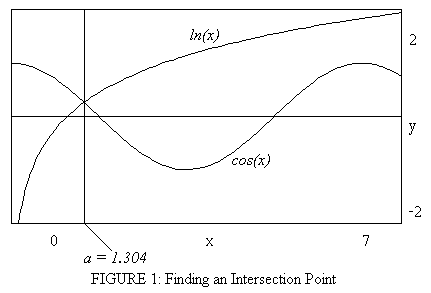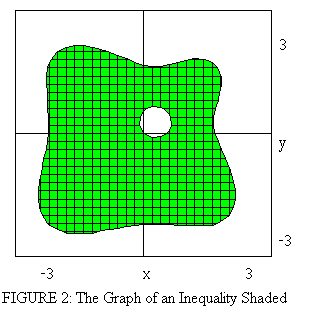Click here to download the .dpg file. The range for x, namely, from 0 to 7 is chosen to show that ln(x) clears the maximum of cosine after the first intersection point. Hence there can be only one intersection point between the two curves. This is illustrated in Figure 1 below:
In the last line of the .dpg file, notice the equation x = a. This plots a vertical line through the plot at the value specified in the file for the value a. Using the scrollbar, change the value of a, thus moving the vertical line until it passes through the intersection point. The value of a at this point is given at the bottom of the DPGraph screen and noted in Figure 1. Based on this estimate, we may conclude that the equality ln(1.304) = cos (1.304) holds approximately (to two decimal places according to the calculator with cosine computed in radian mode).

